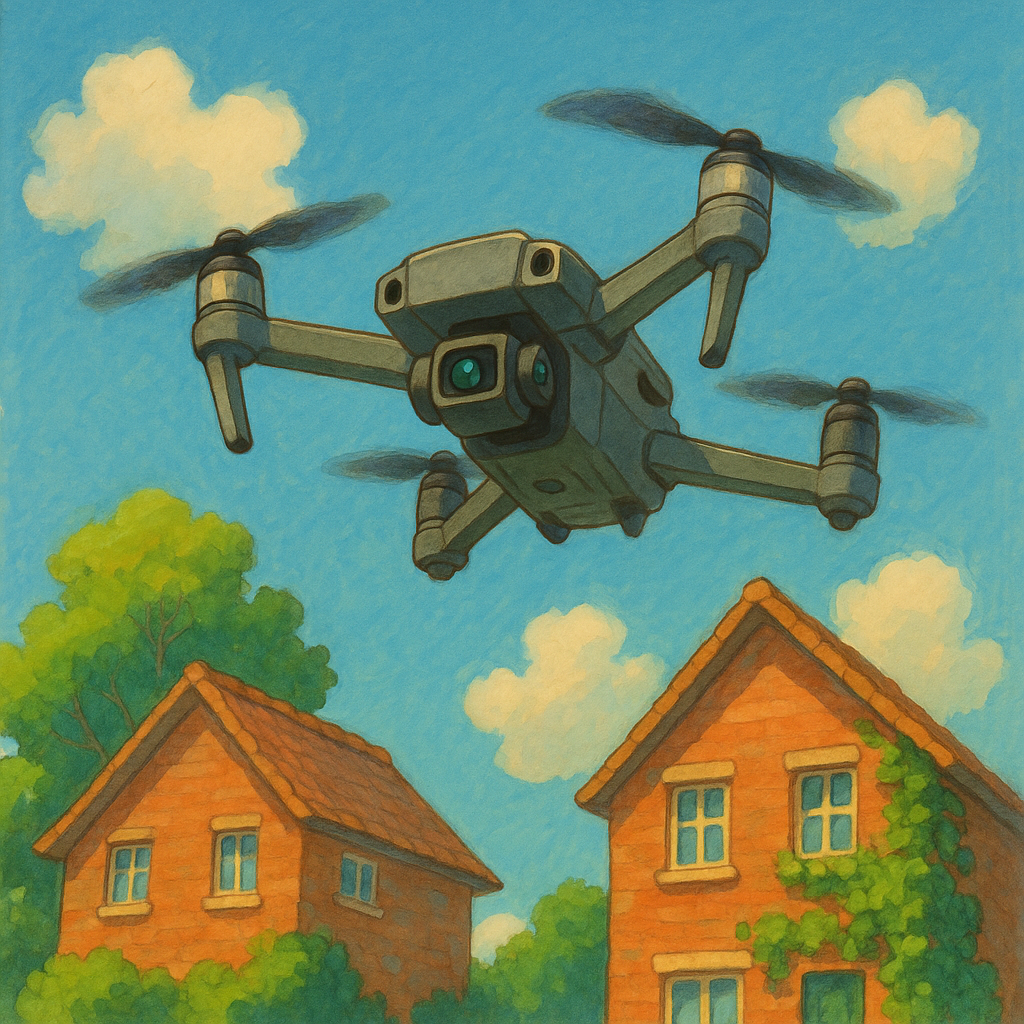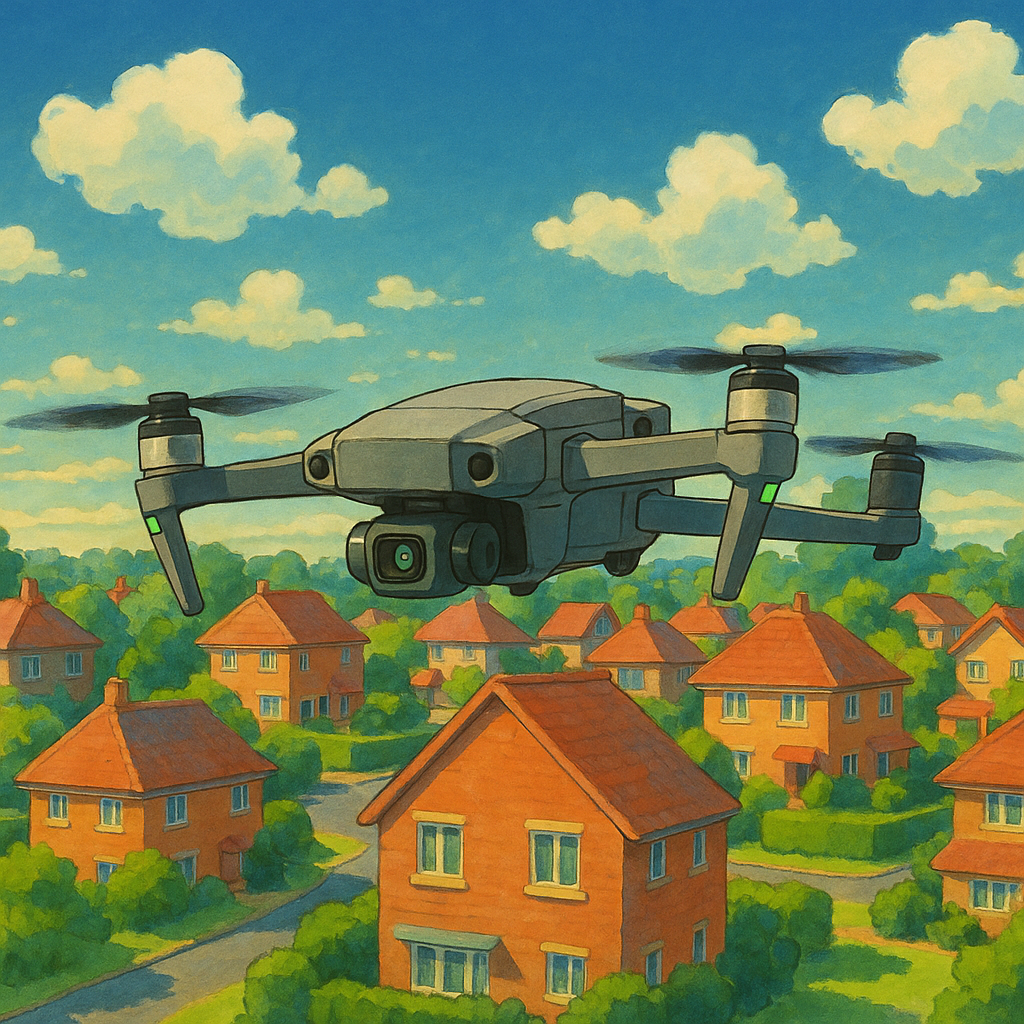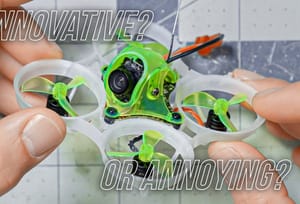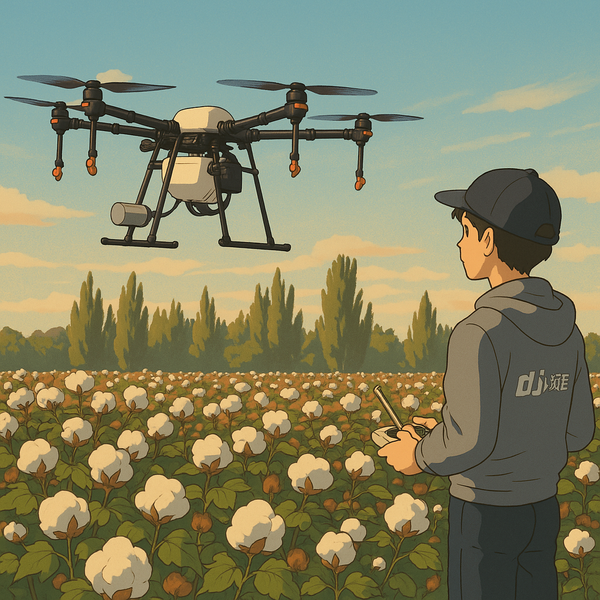You’ve just unboxed your new drone. The battery is charged, the props are on, and you’re imagining the incredible bird's-eye views you're about to capture. You step into your garden, launch into the air, and as your neighbourhood unfolds beneath you, a question pops into your head: Am I allowed to be flying here?
It’s one of the most common uncertainties for any drone pilot in the UK. With houses, gardens, and farms all around us, navigating the line between public airspace and private property can feel tricky. So, let’s clear the air once and for all.
TLDR: The Quick Answer
Yes, but it's not a simple free-for-all. Flying over private property is legal in the UK, but only if you follow a strict set of rules.
The Big Misconception: Who Actually Owns the Sky?
Here’s the simple truth: in the UK, landowners do not own the airspace above their property indefinitely.
Think of it like the public road outside your house. While your driveway is private, the road is for everyone to use responsibly. The sky works in a similar way. The right to enjoy your land is protected, but that doesn't give you a veto on every aircraft that passes over.
Legally, the airspace is regulated by the Civil Aviation Authority (CAA) from the ground up. This means that, in principle, a drone flying over a garden is not automatically breaking the law. However—and this is a big 'however'—the way you fly over that garden is what determines if you're a responsible pilot or a legal nuisance.
The Official Rulebook: Mastering the Drone & Model Aircraft Code
Before you even think about flying over property, you must live and breathe the CAA's Drone and Model Aircraft Code. These aren't just friendly suggestions; they are legal requirements.
The core rules for every flight are:
- Stay below 400ft (120m): This is crucial for keeping a safe distance from planes and helicopters.
- Always keep your drone in sight: You need to be able to see your drone with your own eyes at all times to avoid collisions.
- Keep 50m away from people: You must maintain a 50-metre horizontal distance from people who aren't with you or involved in your flight.
- Never fly over crowds: Festivals, concerts, or busy city centres are no-fly zones.
And don't forget your registration! If your drone has a camera (which most do) or weighs over 250g, you must have a Flyer ID (to show you've passed the theory test) and an Operator ID visible on the drone itself.

The Privacy Puzzle: Are You Accidentally Spying?
This is the number one reason people get concerned about drones. Even if you're flying perfectly legally according to the Drone Code, privacy law is a completely separate issue.
If your drone's camera can identify a person or capture personal information, you are processing data and must comply with the UK GDPR. The Information Commissioner's Office (ICO) is clear: you can't just film people on their private property without a very good reason.
Ask yourself:
- Am I filming a specific house or garden?
- Could my camera see through a window?
- Am I hovering over one spot for a long time, making someone feel watched?
If the answer is yes, you could be crossing a line. Persistent and intrusive filming can be seen as harassment. The best practice is to respect people's privacy completely. Plan your flights to avoid lingering over homes, and if you capture identifiable people by accident, consider deleting the footage.
When Flying Becomes Foul Play: Nuisance & Harassment
Let's say you're following the Drone Code and being mindful of privacy. Can a homeowner still complain? Yes, if your flying becomes a legal "nuisance."
A nuisance is any act that substantially interferes with someone's right to peacefully enjoy their land. This could be:
- Repetitive Noise: Flying the same low-level path over a garden again and again, especially at unsociable hours.
- Causing Alarm: Flying in a way that makes someone feel unsafe or worried about what you are doing.
If your flying is persistent, targeted, and causes distress, it could even escalate to harassment. The key is reasonableness. A drone passing over once at 300ft is perfectly reasonable. Hovering at 50ft outside a bedroom window is not.

The View from the Ground: What to Do if a Drone is Bothering You
If you're a homeowner and a drone is causing you concern, here's a calm and effective approach:
- Don't Panic: Never try to hit, damage, or capture the drone. You could be liable for breaking it and even face prosecution.
- Document: Note the time, date, and the drone's behaviour. A quick video on your phone can be useful evidence.
- Try to Talk: If you can see the operator and feel safe, a polite conversation is often the quickest way to resolve the issue. They may not have realised they were causing a disturbance.
- Report It: If the drone is flying dangerously (e.g., near an airport or over a motorway), call the police immediately. For persistent privacy or harassment issues, report it to the police on their non-emergency 101 number.
Your Pre-Flight Checklist for Peace of Mind
Want to be a great drone pilot who nobody ever has a reason to complain about? Run through this checklist:
✅ Am I registered? (Flyer ID and Operator ID are current).
✅ Do I have permission? (For take-off and landing on the land I'm using).
✅ Have I checked the area? (No flight restriction zones, bylaws, or hazards). ✅ Is my flight path respectful? (Avoiding lingering over homes, schools, or private gardens).
✅ Am I flying at a reasonable time? (Not at the crack of dawn or late at night).
✅ Can I see my drone at all times? (Visual line of sight is non-negotiable).

The Final Word: Shared Skies, Shared Responsibility
So yes, you can fly a drone over private property in the UK. But the right to do so is balanced on a foundation of safety, privacy, and simple courtesy.
The sky is big enough for everyone, but it’s our collective responsibility to use it wisely. By understanding the rules and flying with respect for those on the ground, we ensure that drones remain a fantastic tool and a joy to fly for years to come.
Fly safe!






